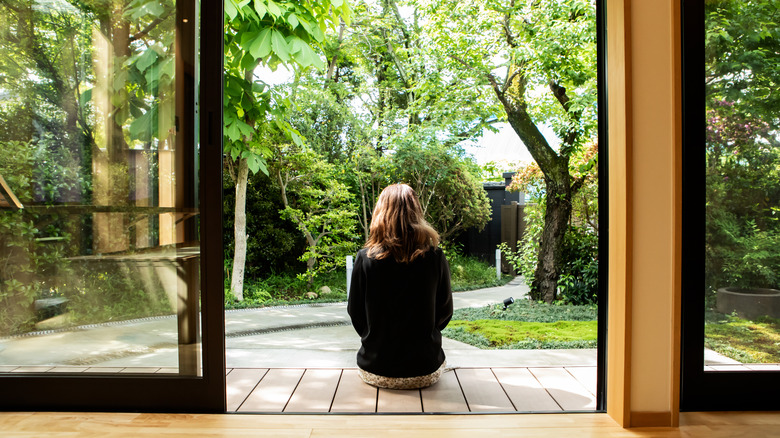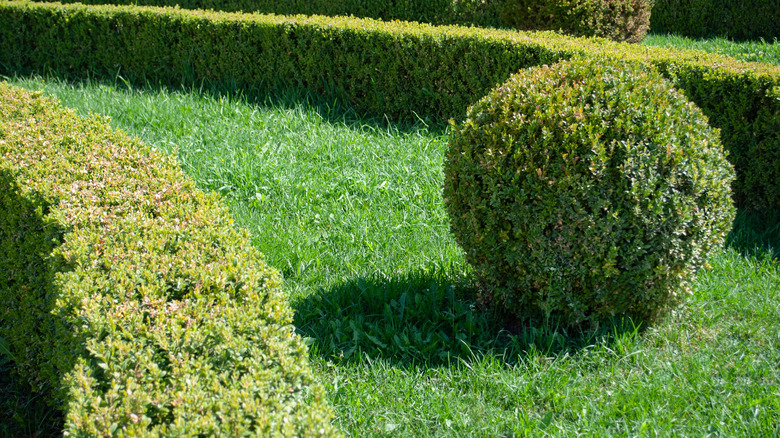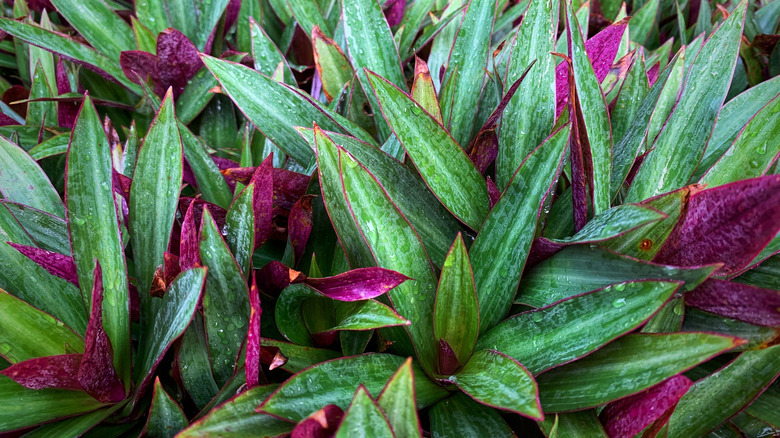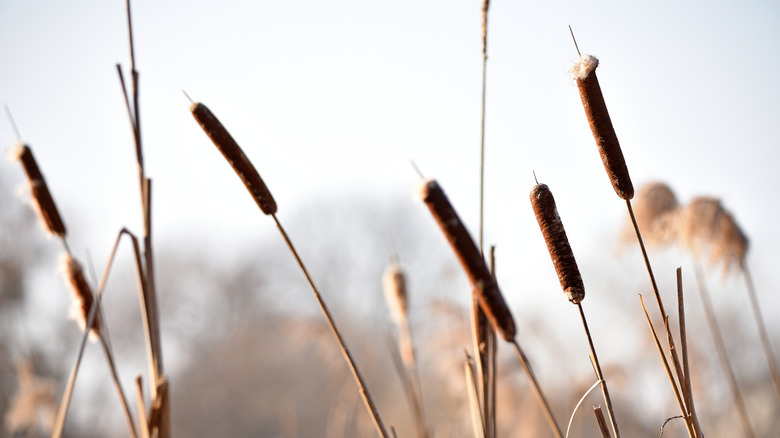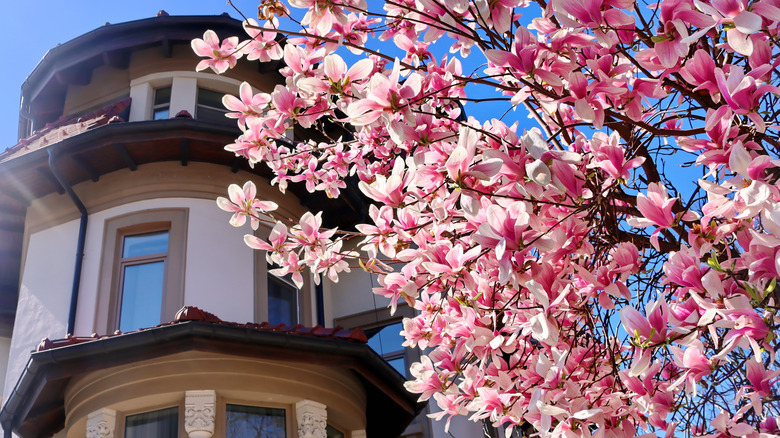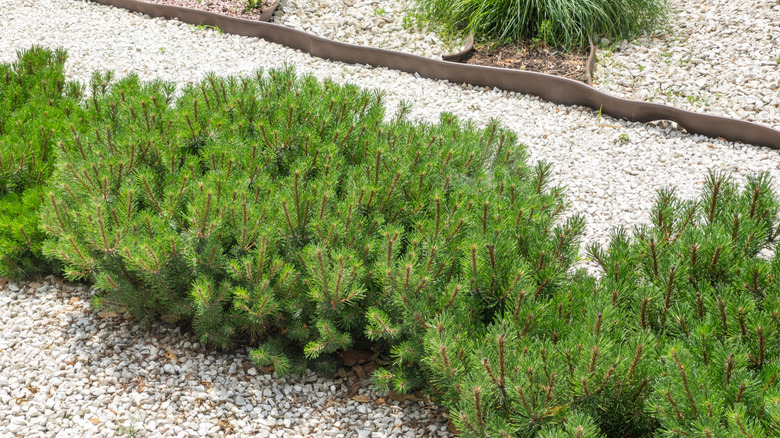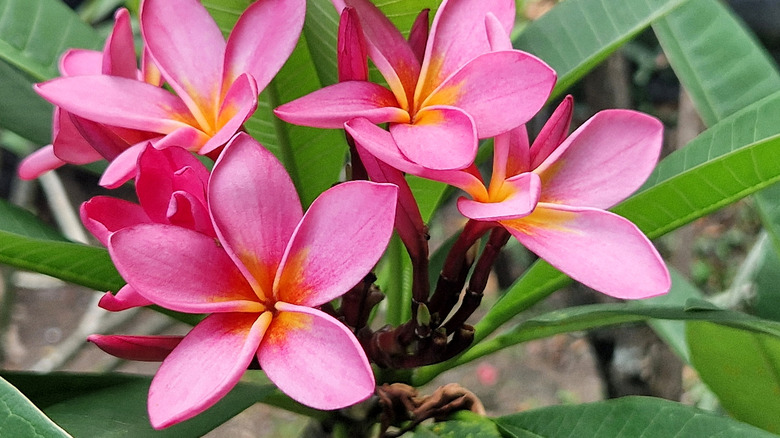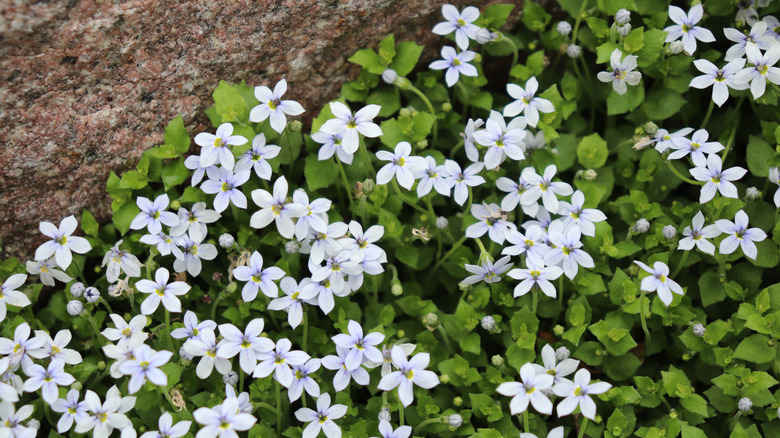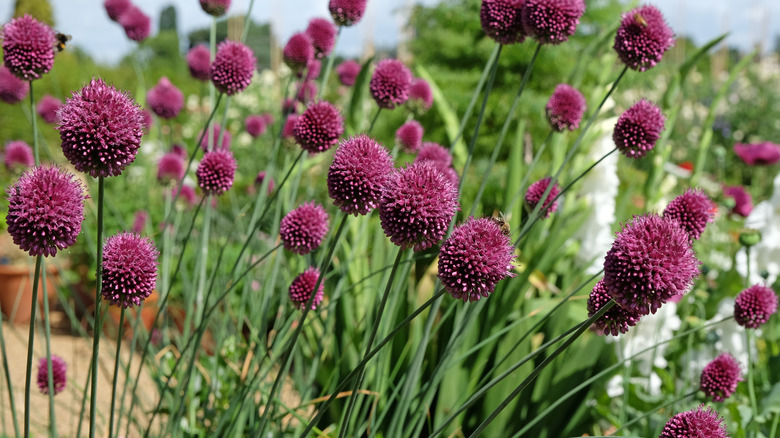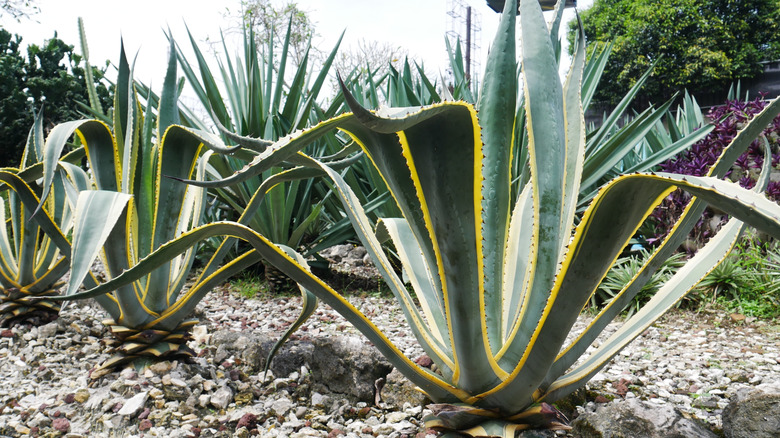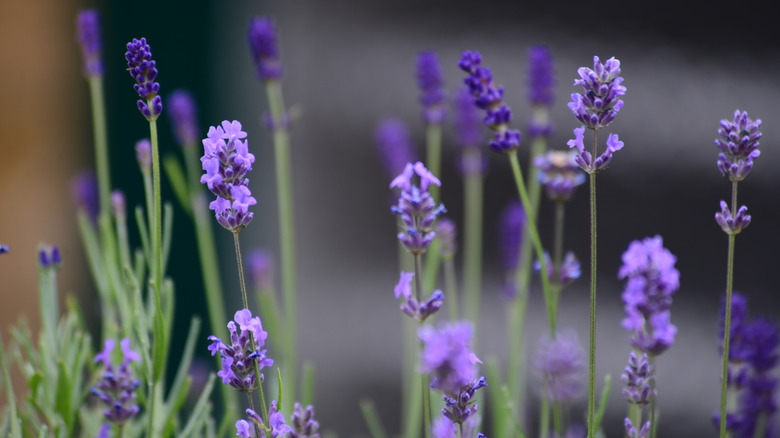10 Plants You Need To Complete A Serene, Minimalist Garden
Every plant has a distinct purpose in a garden that relies less on being showy and more on subtlety. A serene, minimalist landscape doesn't have bursts of color or busy arrangements. Every leaf, every line, and every bloom plays into the overall design with quiet elegance. The right mix of texture, shape, and color can turn even a small patch of earth into a calming, thoughtful retreat. In this landscape, plants aren't just a decoration, but are necessary elements that help create balance, rhythm, and stillness in your outdoor space. Focusing on plants that are hardy, low-maintenance, and naturally pretty, you can create a garden that invites you to slow down and, um, smell the roses.
Minimalist gardens are less fussy, but far from boring. Plants are carefully selected for their shape, movement, or quiet presence, bringing a natural rhythm to their design. Whether you have a spacious landscape or a small patio, the right plants make all the difference between calm and chaotic. Think evergreen shrubs like dwarf mugo pine, soft groundcovers like blue star creeper, or trees with clean lines like magnolia or plumeria. Or, a single agave plant that can turn into a sculptural centerpiece amongst gravel or stone.
At the end of the day, these minimalist and serene plants will look good all year and don't ask for much in return. Before building your dream garden, recheck your USDA growing zone, which might have changed since the last time you looked.
Sculptural topiaries
When you're designing a minimalist garden, topiaries are like living sculptures. They bring structure without the clutter. The key is to use just a few, but make them count. Think clean shapes, soft greens, and repetition. If you want a truly aesthetic look, try cloud pruning. It's a technique that turns them into fluffy cloud-like accents. To get the look, pick the popular evergreen shrub that's perfect for plant sculpting.
Oyster plants
The oyster plant (Tradescantia spathacea) is a tough, easygoing plant that thrives in warmer climates (USDA zones 9 though 11). With bold leaves and rich purple underside, it adds a quiet pop of color and texture, making it perfect for minimalist or tropical-style gardens without any additional fuss. This compact plant grows 6 to 12 inches tall, with slender, narrow leaves arranged in a pretty spiral rosette that doesn't follow a strict blooming schedule — it can showcase its small, long-lasting white flowers any time throughout the year.
American reed grass
For bringing graceful movement and texture to minimalist landscapes, the American reed (Phragmites australis) is an ornamental grass that can create a soft, serene vibe. Growing up to 5 feet tall, it brings a light, airy texture to garden borders or water edges. American reed grass is low-maintenance and quietly beautiful, adding structure and rhythm to any serene garden. It thrives in zones 4 though 10, but doesn't handle super hot temperatures for too long.
Magnolia trees
Magnolia trees (Magnolia L.) might look maximalist, but just wait. Their clean lines and quiet structure offer a subtle statement, while their blooms add just the right amount of showiness without overwhelming the space. With natural grace and understated presence, magnolias create a peaceful focal point that complements minimalist designs. They're hardiest in zones 4 through 10, and despite their beauty, magnolias are a low-maintenance tree. If it gets out of hand, learn the best time of year to tame an overgrown magnolia tree.
Dwarf mugo pine shrubs
A dwarf mugo pine shrub (Pinus mugo) is a compact, slow-growing evergreen shrub that brings structure, texture, and calm year-round to minimalist landscapes. Its low, mounded form and deep green needles make it perfect for hardiness zones 2 though 8, in areas where simplicity is the one thing you're hoping to achieve. This shrub can grow up to 5 feet tall and will look statuesque next to your favorite perennial blooms.
Plumerias
Plumeria (Plumeria L.) is a tropical plant known for its dreamy, fragrant flowers that can bring a resort-like look to your garden. It boasts pretty blooms from summer to fall in colors ranging from creamy white to vibrant pink, yellow, or coral. With open branching and thick, fleshy leaves, plumeria brings a relaxed, airy elegance without overwhelming your clean design. This pretty tree/shrub prefers tropical climates found in zones 10 through 11.
Blue star creepers
When you want groundcover that's delicate but tough at the same time, blue creeping star (Isotoma fluviatilis) has that and more. Its tiny, star-shaped blue flowers form dense greenery, making it a low-profile — and really pretty — option for minimalist gardens. Perfect for zones 6 though 8, the blue creeping star looks great in rock gardens or can fill an empty area that needs something to make it pop.
Ornamental onions
The unique and elegant ornamental onion (Allium L.) adds quiet drama to minimalist gardens. Known for its globe-shaped blooms, this perennial thrives in zones 4 though 9 and brings structure and height without overwhelming the space. Flower head colors can be found in purple, white, or pink hues and float like delicate spheres above green foliage, creating a peaceful vibe. Ornamental alliums can turn borders or rock gardens into friendly spaces for pollinators to flock to.
American agave
The architectural shape of the American agave (Agave americana) brings a bold presence that speaks volumes without saying much. Thriving in zones 8 though 11, the agave is drought-tolerant and super low-maintenance. With its large, spiky leaves, this succulent creates instant structure for desert-inspired landscapes that lean on shape and texture over color. Although agaves can produce blooms up to 25 years after being planted, once you see that first flower, the agave plant will die.
English lavender
English lavender (Lavandula angustifolia) is the quintessential plant for every garden, but especially ones that inspire a calmer vibe. In hardiness zones 5 though 8, lavender puts on a spectacular show of blooms from June to August by bringing soft color, richly soothing fragrance, and clean structure all in one. Lavender is perfect for minimalist landscapes where color and structure are intentionally used sparingly, and it's a great choice for inviting pollinators like bees and butterflies.
